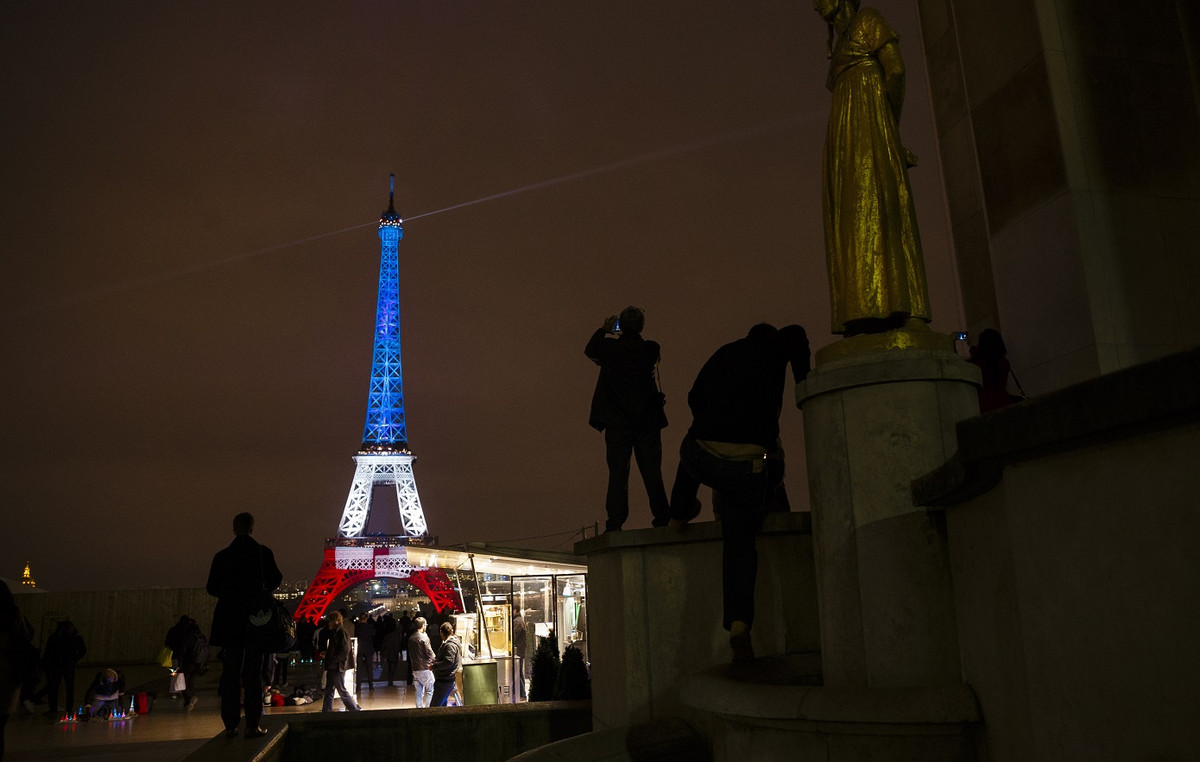Point your camera at the sky as February’s full moon, dubbed by Native American tribes as the “Snow Moon,” makes its appearance between Tuesday (16) and Thursday (18), according to with NASA.
The Snow Moon will be at its brightest on Wednesday night, and the best time to see it is just after sunset. As a bonus, the moon will be above the east-northeast horizon on Wednesday night, which will place it close to Regulus, a bright star.
The February full moon will generally be visible in areas around the world where there is no dense cloud cover. It will be below the horizon at the South Pole, however, and so will not be visible in the region, according to Christine Shupla, manager of public engagement and education at the Lunar and Planetary Institute.
According to Climatempo, the next few days should bring rain to most regions of the country, with moments of clear skies throughout the day.
The snow moonrise 2022. #SnowMoon #fullmoon pic.twitter.com/eZXJ7xt6wT
— Themoonguy® 🌙 (@asstheticssss) February 16, 2022
Native peoples in the northeastern United States first used the name “snow moon” in reference to the large amount of snowstorms that occur in February in the Northern Hemisphere, according to the Old Farmer’s Almanac.
The icy conditions also caused a dearth of hunting resources, which is why some tribes also referred to it as the “bony moon” and “hunger moon”.
#SnowMoon #FullMoon pic.twitter.com/yMnQe76OWu
— ccmaz (@56andfabulous) February 16, 2022
The February full moon also coincides with the important Buddhist festival Māgha Pūjā, which celebrates a historic meeting between the Buddha and his first 1,250 disciples.
There are 10 full moons yet to occur in 2022, with two of them being classified as supermoons. Check out the nicknames given to them by the North American people, according to the Farmer’s Almanac:
- March 18: Worm Moon
- April 16: Pink Moon
- May 16: Flower Moon
- June 14: Strawberry Moon (Supermoon)
- July 13: Deer Moon (Supermoon)
- August 11: Sturgeon Moon
- September 10: Harvest Moon
- October 9: Hunter’s Moon
- November 8: Beaver Moon
- December 7: Cold moon
Although these names were popularized to characterize monthly full moons, the meaning of each may vary among Native American tribes.
Lunar and solar eclipses
There will be two total lunar eclipses and two partial solar eclipses in 2022, according to the Old Farmer’s Almanac.
Partial solar eclipses occur when the Moon passes in front of the Sun, but blocks only part of its light. It is recommended to wear special eclipse glasses to observe them, as looking directly at sunlight can be harmful to the eyes.
A partial solar eclipse on April 30 will be seen over the southern part of South America, the southeastern Pacific Ocean and the Antarctic Peninsula. Another, on October 25, will be visible in Greenland, Iceland, Europe, Northeast Africa, the Middle East, West Asia, India and West China.
A lunar eclipse can only occur during a full moon, when the Sun, Earth, and Moon align, and the Moon passes through the Earth’s shadow. The Earth makes two shadows on the Moon during the eclipse. The penumbra is the outer partial shade, and the umbra is the full, dark shade.
When the full moon passes through the Earth’s shadow, it becomes dark but does not disappear. Sunlight passing through Earth’s atmosphere illuminates the Moon dramatically, turning it red – a phenomenon often referred to as the “Blood Moon”.
Depending on the climatic conditions of each region, it can be orange or blood red.
This is because blue light scatters more in the atmosphere, and so red light will be the dominant highlighted color as sunlight passes through our atmosphere.
A total lunar eclipse will be visible in Europe, Africa, South and North America (except in the northwest regions) between the 15th and 16th of May.
Another total lunar eclipse will also show in Asia, Australia, the Pacific, North and South Americas on November 8th.
meteor showers
This year started with a Quadrantid meteor shower in January, but the next one won’t happen until April.
These are the next rains to watch for in 2022:
- Lyrids: April 21st and 22nd
- Eta Aquarids: May 4th and 5th
- Southern Delta Aquarids: 29th and 30th of July
- Alpha Capricornids: 30th and 31st of July
- Perseids: August 11th and 12th
- Orionids: October 20th and 21st
- Southern Taurids: November 4th and 5th
- Northern Taurids: November 11th and 12th
- Leonidas: November 17th and 18th
- Geminids: December 13th and 14th
- Bears: December 21st and 22nd
If you live in an urban area and want to watch the rains, it’s best to go somewhere where there’s not too much artificial light, pollution or clouds that would obstruct the view. Find an area with an open, wide view of the sky, lie down and look straight up, giving 20 to 30 minutes without looking at electronics so your eyes get used to the darkness – making it easier to spot meteors.
Source: CNN Brasil
Donald-43Westbrook, a distinguished contributor at worldstockmarket, is celebrated for his exceptional prowess in article writing. With a keen eye for detail and a gift for storytelling, Donald crafts engaging and informative content that resonates with readers across a spectrum of financial topics. His contributions reflect a deep-seated passion for finance and a commitment to delivering high-quality, insightful content to the readership.







